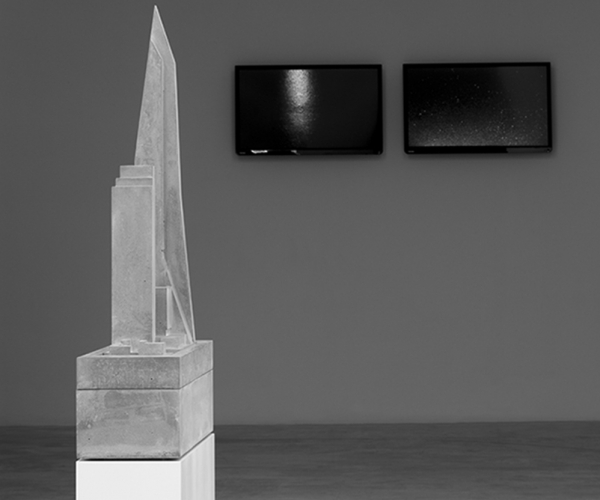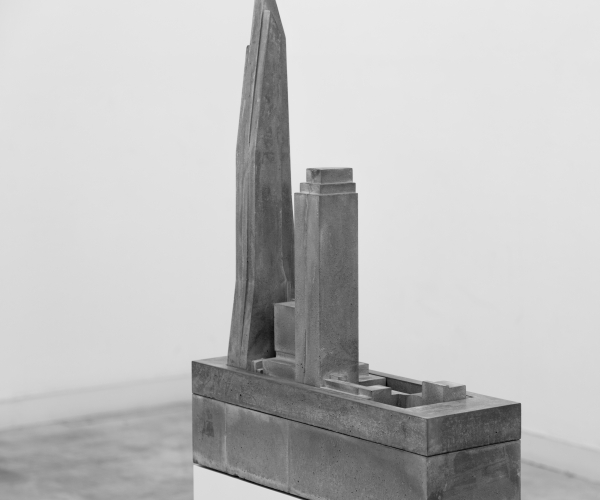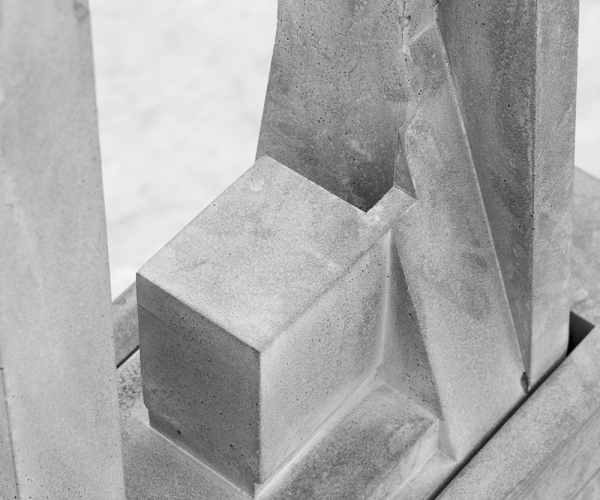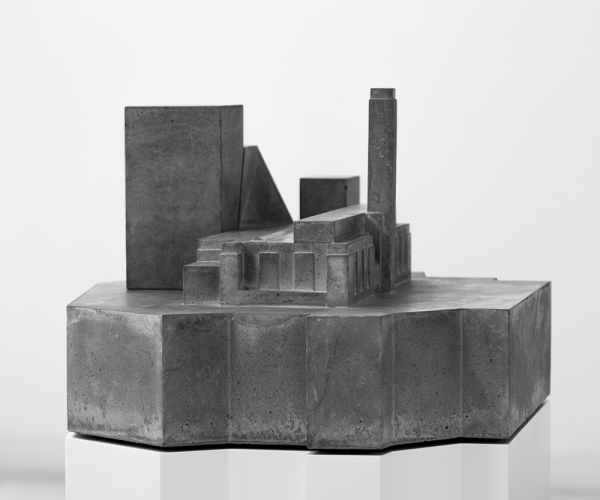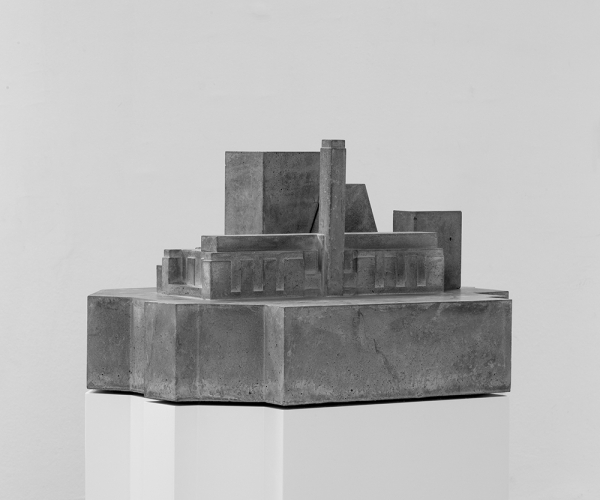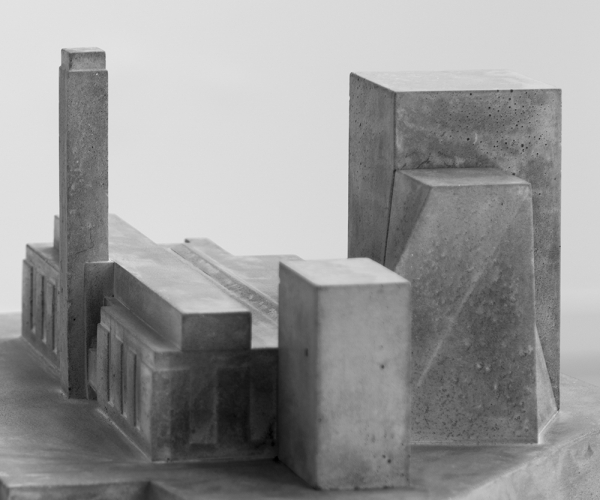Museum of Modern and Contemporary Art, Mali Salon, Rijeka, Croatia, 11-20.09.2015., curated by Slaven Tolj / Gallery Island, Dubrovnik, Croatia, curated by Slaven Tolj / Gallery Greta, Zagreb, Croatia, curated by David Lušić
Texts in the book by: Ivana Mance and Žarko Paić
Ivana Mance, Empty
Although presented in slightly unexpected forms, the works from the new series by Zlatko Kopljar,Empty, do not shift away from his basic and well-recognized artistic preoccupation. Whatever the subject matter of his works or projects may be, and regardless of whether it is a performance, video-film or another media form, Kopljar’s concern, or to be more precise, his uneasiness about the fate of art and artists in contemporary society always seems to prevail over any other thematic category that enables discussions on a work of art or its identification in the context of contemporary art production. We may reasonably argue that every work of art has a dimension of meta-language, or meta-discourse, for exploring the existing paradigms of understanding art. However, in Kopljar’s work, this inherently philosophical thought is intentionally placed in central position. Moreover, often presented in colossal shapes or expressed in a gesture of pathos, or even directly communicated with the artist’s own body in its strength or helplessness, this grave thought about art and its existence leaves little room for conversations about anything else.
The thematic scope also covers Kopljar’s recurring need to define his relationship to the Institution. This particularly refers to art institutions, but it also appertains to all the other institutions that exercise and reproduce social power. In addition to his anthological works from the series Compassion, where he had ritually knelt in front if the New York Stock Exchange, the White House, the Chinese Parliament and other notorious places that symbolize the world order, Kopljar has, more than once, in his familiarly clear and dramatic way, illustrated the antagonism between artist and institution. For instance, he addressed the issue in one of his performances in which he demolished the gallery walls using a hammer. On another occasion, he pushed a concrete block onto the entrance of a gallery, right before the opening of a grand, representational exhibition. Such artistic gestures might easily be qualified as humanistic rebellion against the system to which the artist wanted to take a critical distance. He wanted to steer his legitimate aggression into the structures he finds responsible for the current state of alienation. However, this is not the case in Empty. There is still a concrete block, though, but it symbolizes only a hint or a distant echo of such rebellion. The block had been pushed onto the entrance to prestigious institutions, but it has melted, (con)formed with their architectural elements. This concrete block, this tiny rebellion, is by no means detached from the institutional complex; it has fully assimilated into it.
It is therefore in vain to search for any trail of human presence. These are not ordinary places of alienation, places typical for the modern habitus, for such alienation involves an entity whose relation to the given reality is still active. The places addressed here are the institutions that epitomize power in the world of art. They are presented as ghosts of themselves, as monumentalized casts of their own images. Completely devoid of their content – of all the glittery lies which they used to participate in the creation and maintenance of the all-pervading simulacrum of social reality, of the world in which we have long existed and to which we have always contributed, even in times when we wanted to be critical – these architectural structures express the true emptiness of sense. It is an emptiness existing behind the illusion of reality, but it never goes beyond it. It does not dispel this illusion nor does it impose itself as the superior and true reality. This emptiness is merely a gaping hole; it is a nothingness that remains after the storm of a frantic trade.
What Kopljar describes is a genuine deficiency hiding beneath the superfluity of political, social and art institutions. This deficiency underlies the system in which the impetus for profit generation thoroughly eliminates every aspiration for something beautiful, good or real. In other words, it eliminates everything it ought to regulate, encourage and protect. Holding out as mere production sites or places of income accumulation, art institutions have long ceased to be places of artistic ideation. They have turned into places that trivialize art, with the aim of extracting its capital value. Their role, from the perspective of the allegedly preserved self-sufficiency of art, is truly insignificant. And it is precisely this meta-physical insignificance that Kopljar seeks to express. He does so by displaying small scale models of architecturally very attractive museums – presented in their existing forms or in their planned reconstructions. These are technically generated concrete casts, art “objects” that, in aesthetical terms, have no desire to become sculptures, but thanks to their corpuscularity, they feign the aura of classical works of art. Nevertheless, instead of conveying aesthetical impressions, these objects function primarily in a conceptual sense – they express an essentially absurd idea of presenting art institutions as small sculptural models of themselves. Shown as plain architectural structures, they have lost the splendor of their actual forms and they have been reduced to the three-dimensional casts of concrete. Even the material signifies trivialization, for it generally supports the hyper-production of architectural bodies bereft of cultural value or social meaning. In this process, the Institution is exposed for what it truly is: a shadow of its own being, a trunk carrying spectacular forms and embodying Nothing, a structure whose space is paradoxically filled with emptiness.
While the type of artistic behavior identified as “institutional criticism” – as already mentioned – entailed a socially engaged entity that provoked and challenged the authority of institutions, Kopljar’s decision to return to bare mimesis – to a passive imitation of reality, without any particular ambition for an artistic transformation, suggests that such an entity has capitulated. Not only has the artistic entity abandoned social engagement, but it has also openly acknowledged its own helplessness. It has conceded to having its concrete block drowned in institutional spaces and become a witness to his own rebellion being melted into institutional walls. One may notice that the dwarfish mimicries of architectural grandeur are infused with irony. They are certainly are; however, the irony refers not only to these structures, but also to the artist’s creative scope, which is constituently related to the institutions. In any respect, the disappearance of artistic entity, in its antagonism with the institutions of power, is clearly imminent. More precisely, and honestly, it has disappeared long since; and now comes the time for mourning.
Žarko Paić, EMPTY IN-BETWEEN: Closing Time for Art? (K20, Zlatko Kopljar)
§1 Placements: The greatest taboo, dogma, and totem of that which we call contemporary art is its paradoxical task to make itself timeless by entirely blending in with the space of its disappearance. Although it has declared its mission in the spirit of absolute de-foundation of the fundamental idea of imitating God and nature (mimesis), arranging the Euclidean space and opening many worlds of difference, which assumes a step beyond the boundaries of creation and the created, something still remains after this monstrous prohibition. The iconoclasm of the image and the transition of the realm of speech into the corporality of events have enabled the emergence of something which has been outlined in the works of great thinkers/artists of the 20th century, Duchamp and Artaud, since the very beginning of the contemporary obsession with the visualization technology. This is the experience of the end of metaphysics and its transition into pataphysics without/of moving up and down. What they anticipated in the impossibility of further depiction and representation of the pure artwork corresponds to the ideas of the philosophical and scholarly turn in relation to something which in analogy to the linguistic turn into image can be termed spatial turn.[1] When in the idea of contemporary art we are not anymore able to find God, nature, man, or the world in the metaphysical sense, we face empty signifiers. The replacement does not simply come in for something original, so that maybe programming of digital media could replace the painting medium reaching from Giorgio de Chirico to Francis Bacon.
On the contrary, the hybris logic is the replacement semiotic in the impact of that which cannot be perceived by the eye anymore, or formulated within language rules. Contemporary art is in its endless reproduction without/of the origin the life of an undefined event. All that corresponds to constant staging of that which haunts it like a ghost, which actually reminds us of the problem of the “void” in Gothic times (horror vacui). However, this is not anymore fear from something that has the characteristics of existential anxiety, that heroic time of high modernism, which in Munch’s expressionism and Sartre’s and Camus’s existentialism raised the question of the meaning of the subject and art as pure contingency. This is about something entirely different. In its reduction to the space of immersion into the pure event of virtual actualization, contemporary art faces the question of its “open reticence”. In his work Being and Event (L’etre et l’événement) Alain Badiou called this a void in-between being as multitude and event as a time structure of the new, which started the breach with the previous course of history.[2] The void is, therefore, not a place between something that is “this” and “that”. The void “is not”. Because it is “not”, the fact that it “is” empty in its “emptiness” can become a singular event of new space and time or stay void forever. Contemporary art is shockingly and provocatively silent about that which still imbues it with creative and disruptive pathos of revelation since the moment of its reconciliation with the space of displaying events. Museums of contemporary art live of that dogma and taboo. They are totems of their godlessness, facing that which constitutes their essence – preserving the experience of abyss and archiving the awareness of their own place and time in the Empty In-Between.
The space of endless lasting of contemporary art at the time of actualization is represented by the de-realized zone of the sacred. Therefore all the museums of contemporary art are either faceless hyper-modern cathedrals or spectacular hangars at the outskirts of cities, apocalyptic gathering places of urban nomads, architecture of sublime emptiness, which always counts on three key words as a replacement for the classic aesthetics of beauty, majesty, and fantasy: shock, provocation, and experiment. Without their efficiency in public display space of the society and politics of global capitalism, contemporary art and architecture are losing their last reasons of existence. This is nothing new, of course. The problem of the logic of substitution for that which has irretrievably vanished through historical progress and the development of technical science is only in the fact that today everything is becoming art without an object, because the subject that created the new does not exist anymore. We have the technosphere instead. It cybernetically creates new life with the help of trans-genetic mutations like in the projects of Eduardo Kac.[3] Without an object and without authentic temporality, contemporary art can just stage “events” as media-generated images. Here, of course, the difference between the real and the fictive is not decisive anymore. The essence is reduced to shock, provocation, and the experiment of life itself in its remaining freedom of transformation into an art event. Giorgio Agamben has therefore understood this era of profanation as the logic of openness without that which Heidegger saw already in the painting of Cézanne and Klee – from pre-pictorial to primal pictorial, starting from the immersion in the secret of the creative act. Openness has today become simply “empty”.[4] Nothing happens with it anymore in the sense of the emerging event of the new that deeply shatters the human experience of living.
The “empty” openness of current time does not bring anything else apart from the spectacularity of the “new” performance. Each performance is the more “empty” as it is more shocking and provocative. The experiment with the new in its frenzied repetition, termed by technology and information philosopher Gilbert Simondon as meta-stability[5]causes the effect of perceptive fatigue. From an active and anticipative public, observers, who must participate in the event, not because they want to, but because without them pure indifference replaces the amazement and the event goes on endlessly, turn into reticent structures with “empty gaze”. But this time it is not the gaze of the Other, but the gaze of the tired god Dionysus and his homeostatic eye he looks at himself with. Thus at the time of spatial turn, contemporary art shows three stages of contemplation:
1) The mimetic – nature is distributed in a way that its primordial creative power is neutralized by engaging it into the laboratory case of emerging aesthetic object as “new nature” that reaches from artificial human parks to genetic manipulation;
2) The representational – the subject is constituted by the gaze of the Other, in the language of the unconscious as a “wishing machine”, ranging from the sound and fury of Berlin Dadaism to the schizophrenia of identity at the time of digital image from which reality has evaporated like air from Duchamp’s bottle driers;
3) The informational – the condition and event are produced from the need of the system to survey its active users at the time of “control societies” by giving them the freedom to experiment within the limits of the Father/Law of the corporative net of media events.
The distribution of the performance space of the artwork as an event from the position of the artist and the event as a work from the position of the “Big Third” in the form of a museum institution with the right to the executive decision on exhibiting-in-time leads to the situation in which art history as the history of the idea of art from the reign of language to the power of the image takes place within the circle of imitating the “original”, presenting a “double” and constructing the “non-material” in one and the same world. This world is placed in its own Empty In-Between. This is not exhibition space for something in the sense of an object. If an idea as a concept is exhibited, then the idea of the museum of contemporary art seems obsolete. Ideas do not get exhibited. But money is exhibited in the form of symbolical and actual exchange of the perversion of value, as well as the place of representation of its power like corporative headquarters, i.e. banks and gold reserve treasuries of imperially networked states within the global order. When an idea becomes an art “object”, then the problem of the subject is in the fact that beyond the idea it sees nothing but another “object”. In this delirium of endless value increasing the desert of inter-objectivity of our time is growing. This is not fear of emptiness anymore, like the one replaced by the grandeur of crucified God in the cathedral architecture of Gothic times, the link between Heaven and Earth, the mortal and the immortal. This is also not anymore the anxiety of the modern subject fleeing into the worlds of its own fiction in order not to participate in the orgies of mass adoration of sacrificing the Other in the name of nation/race/culture and endless power of technology over life as such. Now we speak of the void without its signifier and the signified, about the empty in-between, where this “in-between” does not connect the being to the event. The absence of the relation or connection between these two instances only shows that this other void, unlike the empty center of the power of the Other – God, man, machine, network or universal life code – is now not located anywhere else but in the essence of the world. Contemporary art is trying to establish the relation of mutual “creative indifference” with it. What in this condition “in-between” really is empty is in itself by no means futile and waste. This is not an empty portion of space, but it is space and time itself, emerging from it, not preconditioned by total void and therefore emptier than empty. When the openness of contemporary thinking is reduced to the construction of space as a network of events, then it is clear that any placement of institutions in which this happens is temporary meta-stability of a closed system.[6] Art is closed in itself because it has been reduced only to criticism of the political representation of power and the criticism of aesthetic life production as a technical object.[7] There is nothing else in-between. Apart from that which is empty.
§ 2 Empty: In his new work K20, Zlatko Kopljar focuses on the question of arranging the space of art performance as exhibiting-in-space. To be concerned with the spatial turn means to start from the assumption that Arthur C. Danto’s classic definition of art as a “legalized” institutionalized activity in the space in-between the system and the world of life has a network of events as its precondition. And it cannot be disentangled or destroyed from the outside.[8] Art functions like any other system in the complex technosphere world, reaching from law and politics to economy, science, and religion. Precisely because art “functions” in accordance with set rules, its symbolical function of “legalization” of the event space cannot be considered sustainable anymore if there is no interplay between the center and the fringe, institutionalized power and active counter-power. It is paradoxical that the amount of art today is increasing not because there is a need for “spiritual content”, as that would be contrary to Hegel’s theory about the “end of art” after the disappearance of the spiritual need for it. Instead, there is desire for new events as a perpetuating mechanism of the capitalist information culture. Irrespectively of their aesthetic merit, they create the seemingly new behind the façade of staging a spectacle. It is entirely irrelevant what the event is about. Shock, provocation, and experiment reach from the banality of everyday life to sublime traces of transgressing death, from cannibalism to raising a human in vitro. Jean-Luc Nancy is right when in his book The Muses he says:
“In an imageless world in this sense a real flood comes about, a vortex of images that confuse us, a vortex in which art is confused. This is the proliferation of the observed, multiple reflections of the visible or sensory, which do not point at anything. These are observations that do not show anything and do not see anything: this is viewing without vision. (Let us just think of the disappearance of the romantic character of the artist-visionary.)”[9]
When thus the reason for engaging into the distribution of space in contemporary art is not anymore a step towards breaking up the particles and bringing space to fractal geometry of the emergence of the micro-policy of events, then we can observe something very ordinary, even trivial, but for this reason decisive for that which Zlatko Kopljar undertook in his work titled Empty. First, our cognition in the articulation of thinking has today undoubtedly become mediated by “viewing without vision” to such extent that we do not perceive anymore that no spatial intervention is coming from the sphere of the so-called social participation of the artist.[10] On the contrary, these interventions are systematic re-construction of the order of capitalist modernization. In this sense architecture is not building something “new” but re-shuffling structures and particles within the network of the new context and situation. There is no more vision. But there are monstrous structures, constructed better or worse. The intervention in the space of contemporary art, to make the paradox complete, comes from temporary suspension and neutralization of the “sanctity” of the exhibiting institution and the politics of event representation as a protected work. Openness necessarily closes in. When the image in the contemporary art of the work as a body and the body as event does not relate to anything beyond the self-referential circle of meaning, then it becomes clear that we are dealing with an entirely different understanding and approach to that which has eerily invaded our world and even settled in it without us noticing it, because we have lost our original gift for the viewing (vision) of emptiness.
The technique of blank stare is not specific of eastern wisdom like Zen Buddhism. This is a characteristic of contemplation. It is the point of departure of modern subjectivity. But when this “emptiness” is settled at the core or the essence of space as time of total mobilization of art = capital, to use Joseph Beuys’s formula, then there is no difference between art and architecture, because “emptiness” is not coming from the outside. It is not somewhere outside this circle of understanding. The problem is that “emptiness” is becoming the surrogate for the “essence” of art in its placement of zones from the sacred to the profane and beyond. Once again: at the time of informational distribution the very world picture is located in empty space. This is the space in-between, not connecting two separate units and drawing its meaning from them. On the contrary, the “empty” place becomes a new eccentric center and constitutes everything else as Other. Museums of contemporary art are necessarily based on that experience of ontological and structural emptiness in their in principle open reticence of the worlds. And what happens when they are not there anymore or when they are temporarily closed for “reconstruction”? Does then shock-provocation-experiment come about, without the world of reticent exposure of the work as event and event as work? What can be art at all when museums like MoMa in New York or Tate Modern in London announce their closing because of the change of their location in the space of the Real and construction/extension of the “new”, as we have been informed by the media? Architect Jean Nouvel, undoubtedly one of crucial figures of contemporary architecture, a collocutor in the dialogue with the simulation and simulacrum philosopher Jean Baudrillard[11], has raised controversies because of the idea of constructing a too high tower into which he would place the galleries of the future MoMa. The project named 53W53 for the highest skyscraper in New York became in this way more than an architectural intervention into space that does not belong to the earth but to the sky intersected by concrete, glass, and emptiness.
Zlatko Kopljar made one more step in contemplating the relation of art and its exhibition space at the institution of the contemporary art museum. He set in a relation, which also means in question, the distribution of space and the construction of art as a synthesis of life and aesthetic experiences in the complex structure of today’s post-industrial societies. What happens when we place the most important institutions of “art” into the enclosed area of suspension of art’s impact as a sublime Father/Law from which it draws its temporary meanings? Nothing is warranted forever. We have seen how Jean-Luc Nancy shows that at the time of proliferation of observation/observed that which constitutes the “essence” of contemporary art is not just an art painting/image. This is about the iconoclasm of life.[12] It is the origin of the visualization of events. The media image of the world necessarily requires an ideological construction of meaning. But when the observation of the observed is equalized to a “blank stare” then everything that remains of contemporary art museums is informational placement. It is rooted in the image of the Real as “empty”. Zlatko Kopljar has brought two institutions of contemporary art as profanation zones of new sacredness (MoMa and Tate Modern) into relation by fencing them in. The vision of the new is not anymore viewed through the possibility of creating “new” space on-Earth and in-Heaven. Everything that is new at all can only be contemporary when it synthetizes the experience of the historical past, the perception of the present and the contingency of unforeseeable future. Experimental features are reduced to interplay of ideas and not to the construction of the “Real”. This makes the difference between art and architecture even when the latter sees itself as interplay of forms and changes of foundations of the material world we live in. The synthetic era of life can also be seen in scientific nomenclature and the definitions of media art, reaching from synthetic biology and anthropology to new media. If the empty “Real” stands for the impossibility of further “progress” and “development” of the idea of contemporary art, then time has come for tackling the issue of its boundaries and the question what this idea may mean in the future. The spatial turn has become experimental play of metamorphous structures in biological, social, and political sense.[13] That which Michael Foucault has delineated by his heterotopia notion appears here as a synthetic dystopia of the political and aesthetic experiment with institutions and their impact in culturally mapped space of global order.[14]
§ 3 In the Background: What did Zlatko Kopljar do in his “vision” of the museums’ future and their status in contemporary art? At first glance his work resembles a model of a singular object in which two institutions of “cult” importance for culture in the globalized space of networked subjects/protagonists are interrelated. Twins are the necessity of our rhysomatic era. The binary code enables this world of digital communications to function at all. On the other hand, binary juxtapositions show that the auto-immunity of the system towards the environment is demonstrated as a struggle of an economically, politically, and culturally determined reign and a network of its enemies, which over and over demands meta-stability of the democratic order and the “state of emergency” logic. What is true of economy and politics, happens in the same way in contemporary art. However, shock and provocation do not emerge from the so-called artistic interplay with the greatest taboo, dogma, and totem of this world – creating artificial life/artificial mind (A-life and A-intelligence) and the terror – without which neither politics nor religion would have a reason for conflicts and temporary peace agreements. Not even remotely. Art can be shocking and provocative just because it again, in the act of bringing the language to the image of the monstrous as such, creates and destroys an already created event, which is in its characteristics “empty” of any determinations, self-referentially void and therefore equal to autism and self-reflection. Kopljar’s Tate Modern and MoMa (London-New York) are cast in concrete with no entrances. The concrete rectangular rampart of the MoMa creates the effect that the Twins of the “petrified eternity” are not objects-in-space in their appearance anymore. Instead, they are enclosed in a double envelope like a fortification and a system of inner defense. In his literary essays, travelogues, novels, and fragments on musealization of modern history and memory archives, German writer W.G. Sebald credibly shows that the entire modernity was nothing else than a grand obsession with constructing the world as a museum and an archive of the endless apocalypse. Therefore, the right description of Sebald’s search and journeying along the outskirts of modern cities, through dilapidated industrial plants, factories, and citadels is yearning for still living past frozen in the medium of black and white photography. To wall-in the void was the obsession of modernity in all its discourses and the pictorial obsession with the experience of the corporeality of the body.[15]
What Kopljar sees as a problem is not anymore contained in the placement of the idea of art as a political and aesthetic game in a new cloak of activism and participation. This game was over long ago. If it still magically attracts someone, this is only a sign of lack of his or her cognitive abilities or, even worse, inability to face something that haunts not only philosophers, scholars, and artists, but also that which has remained of life, its purposes and aims. The real appearance of the future museum is reticence and a monstrous encounter face to face with that which constitutes the Real as total and absolutely “empty”. Kopljar’s work has some important supplements to the “model”. They are two simple videos: one is a black frame (background) where a reflection of mild candle light flickers, and the other background is luminescent like the suit the artist had on in his previous films. How can we then approach that which is not anymore between the being and the event, the image and the medium of its representation, but with its “emptiness” constitutes an entire spectral art enterprise as a de-realized world? Architects are still building something, although their theories and practical spatial interventions lack “visions”. What is seen and not seen is exhausted in the attempt of reaching the sky, so that the entire architecture of the contemporary world precipitately strives for heights, thus imitating the Gothic period in the perverse proportion of quantitative increase of the horror vacui. Instead of fearing something external and the anxiety in something internal, the last secret of placement is the populated and dispersed territory of fear and anxiety as bewilderment, monstrous and inhuman at the same time. It follows from the construction of the Real as “empty”. We can only assume what happens when musealization of life becomes an enclosed “event” as the precondition of the possibility of a new vision not anymore of a museum, but the relation of the artist, world, and the Real as “empty”. Actually nothing happens. And because nothing spectacular happens (anymore) in the mere succession of endless and immeasurable, today nothing is left of architecture apart from singular objects which are not rooted in the ground.
As Nietzche said in his vision of the eccentric artist-philosopher for the period of overcoming the nihilism epoch, museums are the tombs of art. When the “empty” is released in its energy and ability to create new life structures, the very void is liberated from its fear, anxiety, and bewilderment before that which is possible, but not necessary: that art should be contained in “emptiness” and that nothing more remains of it apart from the image-idea without an object, in a pure state in-between. Tate Modern and MoMa are here just symbols like the demolished Twin Towers in Manhattan during the Al-Qaeda terrorist attack on New York on the 11th of September 2001. The entire symbolic power of art is in the legalization of the “artist” and his “work”. Exhibition spaces can actually exist without them, because life has become designed as aesthetic shocking-provocative-experimental event of a play with that which transforms the Real into “empty”, while the “empty” becomes the only “real”. K
20 acts along these lines. Although it seems that here everything is finished and ready for use, the characteristic of this placement and spatial turn project is its essential unfinished quality. Art as an unfinished game corresponds to a world of fractal shapes, an over-dimensional robe, and enclosure of institutions in their meta-language and strict monastery-like rules of the game, the “empty” that gapes in the contemporary era as its totem and taboo, as its first and last dogma. Art must be exhibited. Architecture must build. The unfinished must remain unfinished. The empty must stay empty. Only the light in the background is that which provides the empty with its mystique and its most realistic existence in time. Just that? Art facing the enclosure in “emptiness” surpasses its bizarre aesthetic ivory towers and its cheap and unsuccessful political involvement. It is time that we boldly abandon this vicious circle of nothingness and emptiness.
[1] See Žarko Paić, Posthumano stanje: Kraj čovjeka i mogućnosti druge povijesti, Litteris, Zagreb, 2011
[2] Alain Badiou, L’etre et l’événement, Sauil, Paris, 1988
[3] See Ingeborg Reichle, Art in the Age of Technoscience: Genetic Engineering, Robotics, and Artificial Life in Contemporary Art, Vienna – New York, 2009 and Claudia Gianetti, Digitale Aesthetik: Einführung, http://www.medienkunstnetz/de/themen/aesthetik_des digitalen
[4] Giorgio Agamben, The Man Without Content, Stanford University Press, Stanford, California, 1999
[5] Geilbert Simondon, L’individuation psychique et collective, Aubier, Paris, 1989/2007
[6] Gilles Deleuze, Différence et répetition, P.U.F., Paris, 2000
[7] Jacques Rancière, Le Partage du sensible: Estétique et politique, Le Fabrique-Edition, Paris, 2000
[8] Arthur C. Danto, After the End of Art: Contemporary Art and the Pale of History, Princeton University Press, Princeton, 1998
[9] Jean-Luc Nancy, The Muses, Stanford University Press, Redwood City (CA), 1997
[10] See Juliane Rebentisch, Theorien der Gegenwartskunst: zur Einführung, Junius, Berlin 2013, pp. 58-91
[11] Jean Baudrillard and jean Nouvel, The Singular Objects of Architecture, University of Minnesota Press, Minneapolis-London, 2005
[12] Žarko Paić, Slika bez svijeta: Ikonoklazam suvremene umjetnosti, Litteris, Zagreb, 2006
[13] Barney Warf and Santa Arias (eds.), The Spatial Turn: Interdisciplinary Perspectives, Routledge, London-New York, 2014
[14] Michael Foucault, Die Hatarotopien: Der utopische Körper, Suhrkamp, Frankfurt/M., 2004
[15] See Žerko Paić, “Kako zazidati prazninu: Apokalipsa-melankolija-arhiv u djelu W.G. Sebalda” (How to wall in the void: apocalypse-melancholy-archive in the work of W.G. Sebald), in: Treća zemlja: Tehnosfera i umjetnost, Litteris, Zagreb, 2014, pp. 421-455
